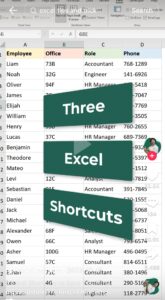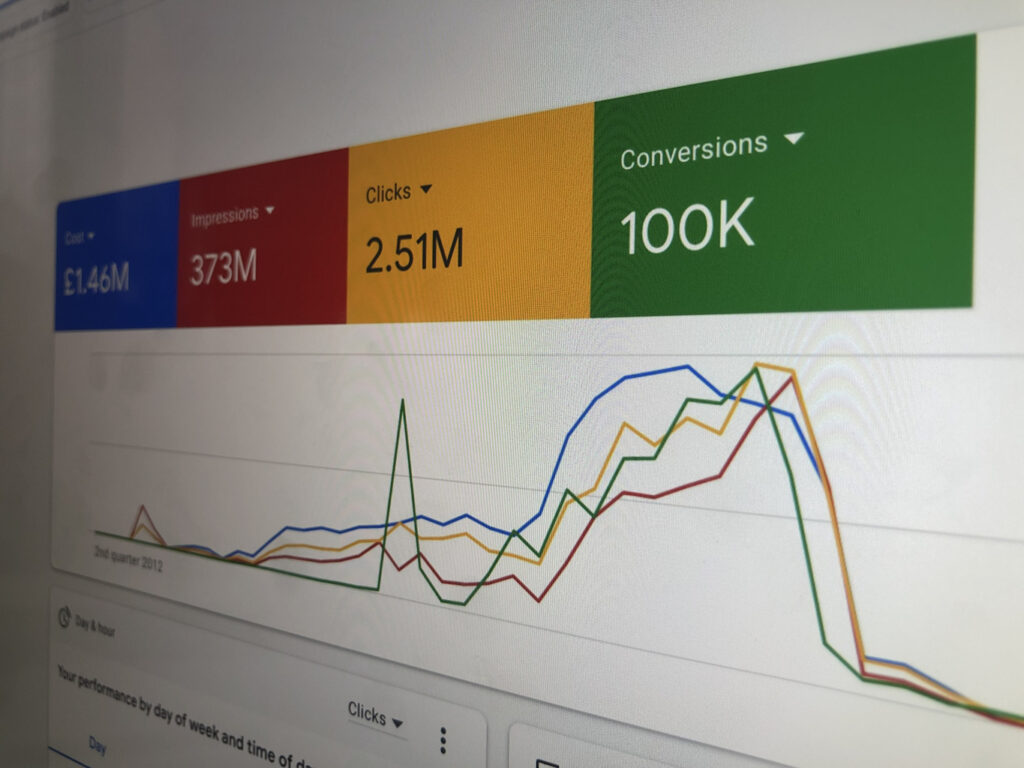In the hands of a commercially savvy advertiser, paid media should be able to contribute significant growth opportunities for any business. That being said, the approach and ‘behavior’ of paid media varies massively from sector to sector, so how should paid media work for tech brands?
For the purpose of this post, we’re going to assume that the primary headline objective here is to generate qualified enquiries and pipeline opportunities. As with any other business, as a tech brand you have to pick your objectives and set your expectations wisely.
This will of course be completely individual to every business, but the main point here is pick the right goals and you’ll be far more likely to be successful.
In the name of simplicity, we’re also going to keep ‘paid media’ focused on PPC (mainly Google Ads) and paid social.
Pick your goals
So what do we mean by this? Surely we just need to generate sales?
Well, yes. However, you really need to carefully consider what role paid media will play in this journey. Depending on your sales cycle and the complexity of your product / service, you’re going to need to decide on the best task to attack.
For example, if your sales cycle is often preceded by a demo; you could use paid media to drive demo requests. If you run events as part of your sales process, consider driving event registrations.
For businesses with larger value sales contracts and longer sales cycles, it’s extremely unlikely that you’re going to generate a qualified high value sales enquiry on the first click. Therefore, more often than not, for more complex and higher value services, the job is about working out what part of the sales process paid media can support.
PPC / Google Ads
How you approach PPC as a tech brand will (or should!) depend on the objective you choose and the budget you have available.
For 90% of advertisers, the general approach is to keep things extremely tight to your primary goal. When the budget isn’t available to use PPC as an awareness driving tool, then the name of the game is focus.
Following the general theme of this article, the assumption is that we are trying to contribute towards a flow of highly qualified leads for a high value service.
When running Google Ads for B2B you have to be extremely cautious NOT to spend budget accidentally on consumer traffic. Essentially, you must make every effort to keep search terms on the ‘business’ side of the fence, and also pay extremely close attention to the relevancy to your offering.
The challenge with an ad platform built on selling words is that it’s extremely difficult for machine learning algorithms to know the subtle nuances of selling high value services.
Best advice is keep an extremely close eye on your search terms, use as much CRM data as you can to feed information back in, and do everything you can to keep things tight and focused. Use automation with caution!
LinkedIn Ads
Where Google Ads is an excellent way of presenting your brand in front of potential customers exactly when they are looking for what you do, LinkedIn Ads is a great way to proactively generate demand amongst key audience segments.
At the risk of sounding repetitive, make sure your planned activity fits perfectly with your objectives.
Be warned though, LinkedIn is typically NOT great at directly advertising services. This might sound a bit crazy, however you have to remember that LinkedIn is still a social platform. People go there for a browse, looking for a bit of insight and value. Tap into this and you’ll do well. Fight against that and you’ll probably fail.
You’ve probably seen a lot of tech brands advertising content downloads, offering resources and trying to get you to sign up for their webinar. Why? Done correctly it works exceptionally well.
The secret to making LinkedIn Ads work effectively is making sure you have the entire journey sewn up. Don’t just stop at getting the initial conversion, you really need to think about the follow up and ensuring you have a good email flow in place.
LinkedIn Ads might be on the more expensive side of the platforms, however get your strategy right and it’s a highly, highly effective tool in your new business armory.
Other Social Platforms
What about advertising on other social platforms such as Meta?
It’s always a mistake to write off anything, so simply saying ‘Meta Ads will never work for B2B’ is a broad statement that should not wash.
A lot of people forget that when you’re marketing B2B, you’re still marketing to human beings. And as human beings, we also have lives outside of work. So, it’s very likely that you can reach your audience on Meta, but the context will be different and you have to adjust your approach accordingly.
If you’re looking to promote entertaining / useful / informative content, using Meta to build your audience can be very effective. It’s also great (and far cheaper than LinkedIn!) for retargeting traffic that you’ve already qualified.
If you can make Excel work on TikTok, then this proves there’s an opportunity to engage an audience with business focussed content. It’s finding the right angle and then dedicating enough time and resource to producing the right content consistently enough.

So, definitely don’t write other social platforms off, but do adjust what you are doing to fit with where you are.
Conversion points
Once you’ve acquired your qualified traffic, perhaps the even bigger task is to convert that traffic into a conversion or enquiry.
This is clearly a HUMUNGOUS topic in itself, but when you’re thinking about your paid media mix, also make sure you are thinking about your landing pages and what’s really going to help people convert.
Some of the items that we see work really well on landing pages:
- Clear, simplified headlines and benefit statements
- Social proof – testimonials and case studies
- Credibility – client logos / press clippings
- Contact forms – keep simple and easy to complete
All sounds very obvious, but the trick is experimenting with all of the above to find the very best combination and detail in each of these areas. Test, test and test some more!
Pipeline Nurturing
Another interesting point to think about is how paid media can be used to nurture contacts through your pipeline.
Most marketers will look at channels such as Google Ads / LinkedIn Ads purely from a new customer acquisition perspective. But, if your datasets are large enough then you absolutely shouldn’t discount the value of retargeting to help nurture existing contacts.
Building audience segments on LinkedIn Ads is thankfully extremely easy, so if you find prospects are getting stuck at a certain stage in your pipeline, get a matched audience loaded in and start serving them content designed and getting them unstuck!
Sales Alignment
A lack of sales alignment is the biggest issue we see in B2B and tech performance marketing. Many times, the sales and marketing teams (let alone performance marketing!) are completely separated and operating in relative silos.
If marketing can’t get real time feedback on sales data, you’re effectively working blindfolded. Equally, if sales don’t fully understand (and get behind) marketing initiatives then it’s going to be hard to drive revenue growth.
On the flip side, the information you can get by speaking to sales is marketing gold dust. They get direct feedback from potential customers. They know what’s making people convert, they know the questions that get asked, and they know all the common objections (and of course how best to handle them).
If you’re working in marketing for a tech business, one of the best things you can possibly do is speak to sales!
Very much hope that the above has been helpful. If you’re looking for help with your performance marketing, please do feel free to get in touch for a chat.





